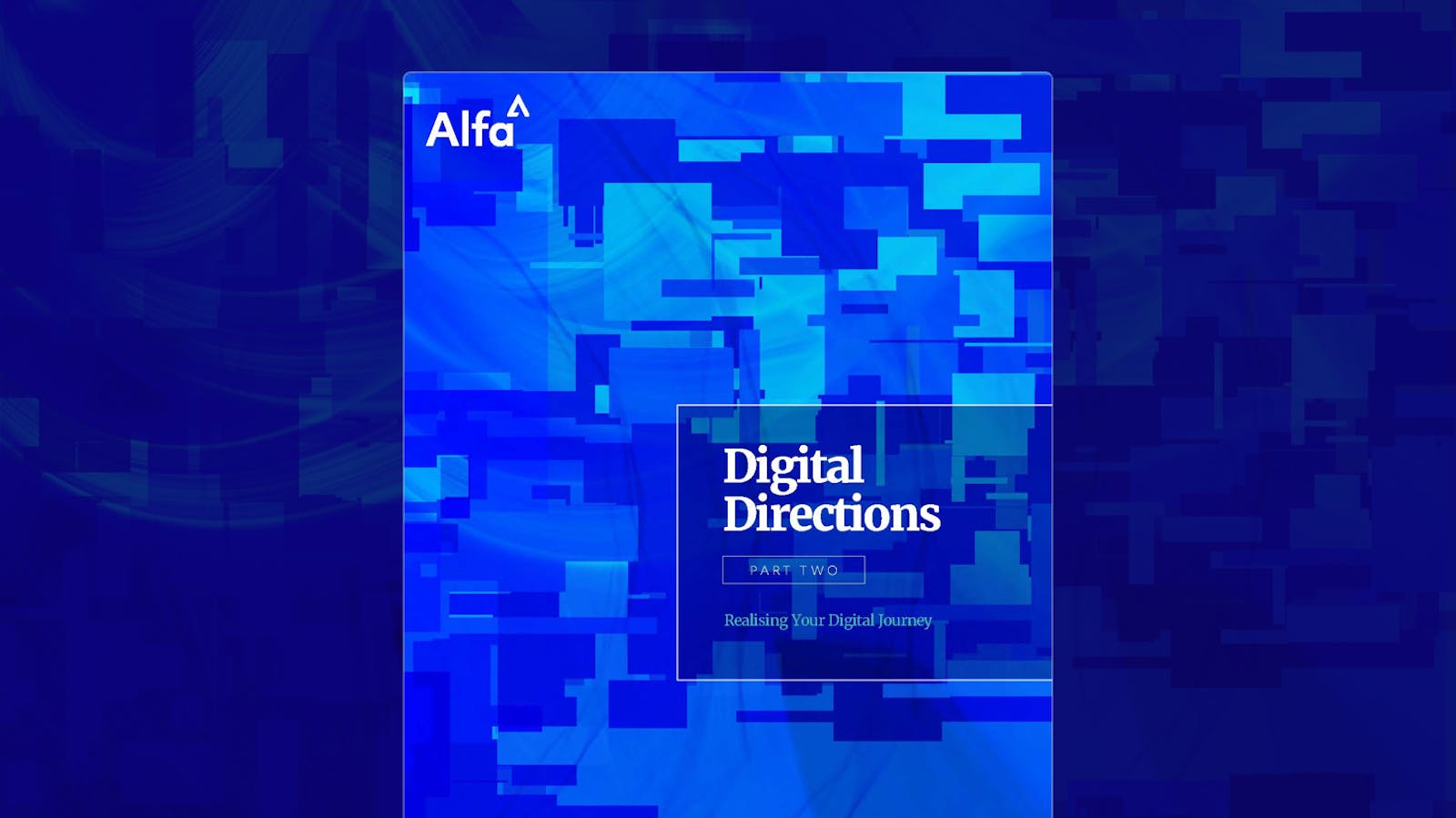Digitalisation: Yesterday’s Needs and Today’s Challenges

Those in the industry who have been paying attention over the last year or two will know that leasing and asset finance systems are changing. After years of caution, finance providers are embracing change in the form of digitalisation. In this article, we discuss how the needs of auto and equipment finance providers are changing.
Our industry has always been risk-averse, particularly when it comes to technology. As technology providers, we at Alfa have always pushed our clients to innovate, but the cautious nature of large-scale lenders obliges them to wait for other markets to mature before moving forward themselves.
Therefore, the use of the latest technologies like artificial intelligence (AI), augmented reality and voice recognition is not widespread in our world. However, competitive pressures and changing customer expectations are compelling companies in the sector to take on this digitalisation challenge.
For some it’s still early days, and the focus is on simple automation of existing processes. Others, meanwhile, are taking a holistic view: building an entire digital ecosystem that embraces internal and external partners, creating a proposition that is genuinely greater than the sum of its parts.
The move to digitalisation is challenging, and presents critical issues - particularly the constraints of legacy systems and the need to develop new skills. But the rewards can be significant.
The past
Traditionally, asset finance businesses have looked to achieve various goals in their operations. Minimising the cost per transaction, for example, is generally one of the first objectives. This is particularly relevant in volume contexts, where there is usually a focus on the automation of as many processes as possible, often using system workflow and business rules together.
Real-time processing, integration and access to data are all key areas. They affect originations (for example, credit checking and valuation lookup) and account servicing, the driver being to maximise efficiency.
The other main objective is compliance, where the system is responsible for making decisions, ensuring they are always consistent and accurate according to the configured rules, thereby removing human interaction and potential error. Compliance is very important to all operators but particularly consumer finance providers, where regulatory obligations are in place to protect consumers in a lending context and which can vary wildly from country to country, province to province and state to state.
These objectives all have positive outcomes, and each has a clear effect on how a company is run and, therefore, how it operates in the market. However, they are all inward-looking in nature; they all concentrate on what the provider is doing, how they’re doing it and how it can be made more streamlined: for them. This traditional, insular approach is - while not wrong - reactive at best.

Market Insights
The present
There is an emerging trend among finance providers to be more customer-centric. This is driven by a desire to promote loyalty and therefore repeat business and is only made possible by understanding what the customer needs and wants - not just by looking under the hood. But, as can be seen in the graphic above, 34% of companies are definitively not using customer data to achieve this.
To understand how business is progressing, providers need a consolidated, consistent view across all channels. Using dashboards and similar to assess the service being provided to customers is essential to the ability to respond. 71% of companies indicated their leadership was able to deliver this sort of change.
Consumers have busy lives and are accustomed to convenience; they want unified, omnichannel experiences. The proliferation of smartphones has made it a reality to have access to data while on the move. Consumers want to be able to call the providers, use their web sites and apps and receive push notifications to keep applications or contracts on the right track. It’s no use having web site administrators in one room and a contact centre in another; modern customers require completeness.
Finance companies need to respect customers' preferences to ensure loyalty and stay ahead of the competition. And while customer self-service is important, it's equally important for other parties to interact or use the system remotely; for example, salespeople working off-site or asset inspections with iPads.
Customers also need flexibility and control. The services provided to them must allow them to be in charge of how their applications are made, and how the ensuing contracts behaves. Being restricted to a limited number of payment profiles or additional services will drive customers away. Aware of the power of convenience, many are providing additional services in the form of optional bundles.
Furthermore, customers look for innovation in products and services. If providers are able to capture the attention of prospective customers in new and interesting ways, then they will be rewarded. But only 36% appear to be moving forward decisively by using data insights, while 55% aren’t using non-traditional data at all.
The future
Traditionally considered only as an outside influence, the customer is rightfully becoming the centre of digital transformation, and digitalisation. The speed of this change will be different across sectors and geographies, so there will be a continued need to support traditional loans and leasing.
However, as disruption of the traditional finance business model continues, additional opportunities will be available increasingly for finance companies to take advantage of more flexible usage solutions, such as car sharing, fractional ownership and subscription.
Other examples of impending innovation include widespread inclusion of AI chatbots for customer service, with machine learning also coming in as a key factor in underwriting and fraud prevention.
In order to remain relevant, customers will have to evolve their business and service models within the next five to 10 years.
Read more in Digital Directions: Part Two.

